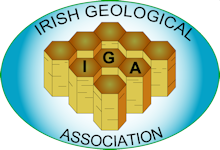IGA Excursion: Saturday 6th September 2025
Lambay Island (Irish: Reachrainn),[3] often simply Lambay, is an island in the Irish Sea off the coast of north County Dublin, Ireland. The largest island off the east coast of Ireland, it is four kilometres (two nautical miles) offshore from the headland at Portrane, and is the easternmost point of the province of Leinster. Of volcanic origin, it has been inhabited since the prehistoric period and has been the subject of multiple archaeological studies. Lambay has notable populations of seabirds, a range of local fauna, some not found elsewhere in Ireland, and a herd of wallabies, as well as more than 300 plant species, and was the subject a major multidisciplinary study of flora and fauna between 1905 and 1907. The island is privately owned by the Baring family[4] and managed by a Trust. It has a very small permanent population residing in the architecturally important buildings but also hosts some day-visitors and short-stay guests. There is a working farm and a newly established micro-distillery producing ‘Lambay Whiskey’.

Co-Leader: Dr. Brian McConnell.
Brian retired in 2022 as Principal Geologist of Geological Survey Ireland, where he managed the Geological Mapping and Geoheritage Programmes and he participated in EU and international energy and geohazards projects with EuroGeosurveys and UNESCO. Brian’s research focuses primarily on magmatic and sedimentary sequences related to the ancient Iapetus Ocean in Ireland and beyond.
Co-Leader: Dr. Stephen Newton.
Stephen is Senior Seabird Advisor at BirdWatch Ireland and Chairman of the Irish Rare Breeding Birds Panel. He manages the Roseate Tern Conservation effort on nearby Rockabill and is currently researching the movement patterns of Puffins and Kittiwakes Breeding on Lambay. His first degree was in Geology and he did spend 4 years working in the oil industry before switching to a bird conservation career. Whilst at university, his principal interest was the Hebridean Tertiary Igneous Province and the Borrowdale Volcanic Group in the English Lake District.
Objectives of the excursion.
Geology: We will examine the volcanic and sedimentary rocks, their facies and relations, to reconstruct (imagine!) the evolution of the Ordovician Lambay volcano. Volcanic rocks include basaltic and andesitic lavas and high-level intrusions, including the famous Lambay Porphyry. Sedimentary rocks include turbidites, graptolite-bearing shale, and fossiliferous limestone. Volcano-sedimentary interactions between these deposits produced limestone conglomerate in a tuff matrix and peperite. We can put our finger on the end of the Caledonian orogenic cycle – the unconformity with the overlying Old Red conglomerate.
It is many years since Brian was on the island; key localities are known but specific outcrops are hazy, so we will explore, observe and interpret together. Expect to walk about 8 km on rough ground with hills and some scrambling down to slippery coastal rocks.
Wildlife: Lambay is both a Special Protection Area for birds and a Special Area of Conservation for flora and habitats. It is one of the largest seabird colonies in Ireland supporting 13 species including Ireland’s newest Gannetry, Puffins and Manx Shearwaters. Most seabirds will have left the island by the time we visit but there still should be a chance to see some Gannets on nests. It is the largest Grey Seal rookery in County Dublin and we should see plenty together with Common/Harbour Seals.
Further important information.
In order to get out to Lambay, we will need to hire a boat and a skipper. The boat’s capacity is 12 people. If there is demand, a second crossing can be undertaken, but the boat needs to be full on each trip to ensure the lowest possible price per person. We will also need to pay for the leaders’ costs. The overall price will be €90 a head. This will be required in advance. I anticipate that we will get up to 12 participants very soon, but I may need to put numbers in excess of this on a wait list while I wait to see if we have enough people to fill a second trip by the same boat. Because of tides the boatman advises Sailing 1 Dep 7.30 Ret 18.30; Sailing 2 Dep 8.30 ret 19.30 (if numbers permit). Final details and information on transport and parking will be circulated to registrants when final numbers have been determined. You will also be able to state a preference for a particular sailing (if we have enough people for two).
After registering successfully (See link below). You will then be sent instructions for payment for final registration after around 1 week. Please note that the deposit of €90 will cover the entire cost of the trip, and will only be refundable if someone on the waiting list agrees to take up a place that falls vacant. A full refund will be paid if the boat cannot depart for any reason.
Please note that landing on Lambay is weather dependent, so it is possible that we may need to defer the trip to the following day (Sunday the 7th September). In extremis, we may be able to undertake the trip the following weekend but this is unlikely.
We anticipate spending at least 7 hours on the island. Good footwear (hiking boots) is required (no wellies please). A packed lunch should be brought and plenty to drink. Nothing is available on the island so we need to be self-sufficient. We should have access to a toilet in the harbour area if needed.
Registration.
Lambay is a place that relatively few are able to visit and we are extremely fortunate to have this opportunity to go there. Please register by clicking HERE

